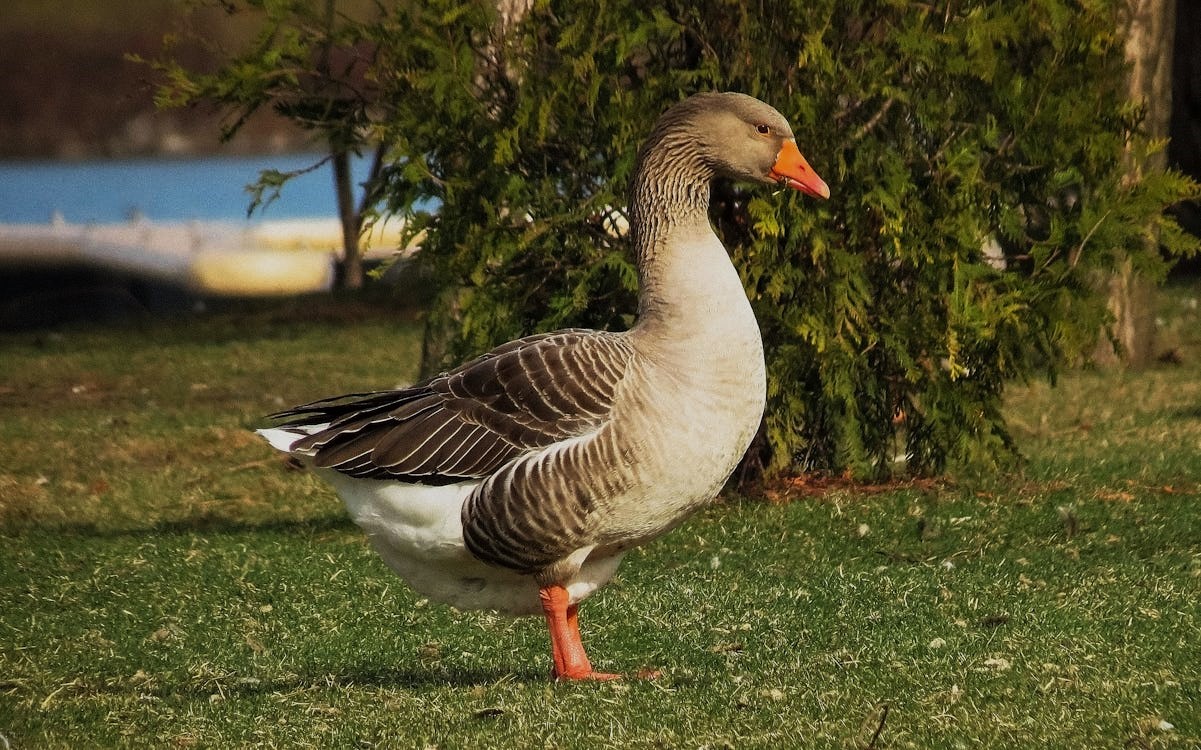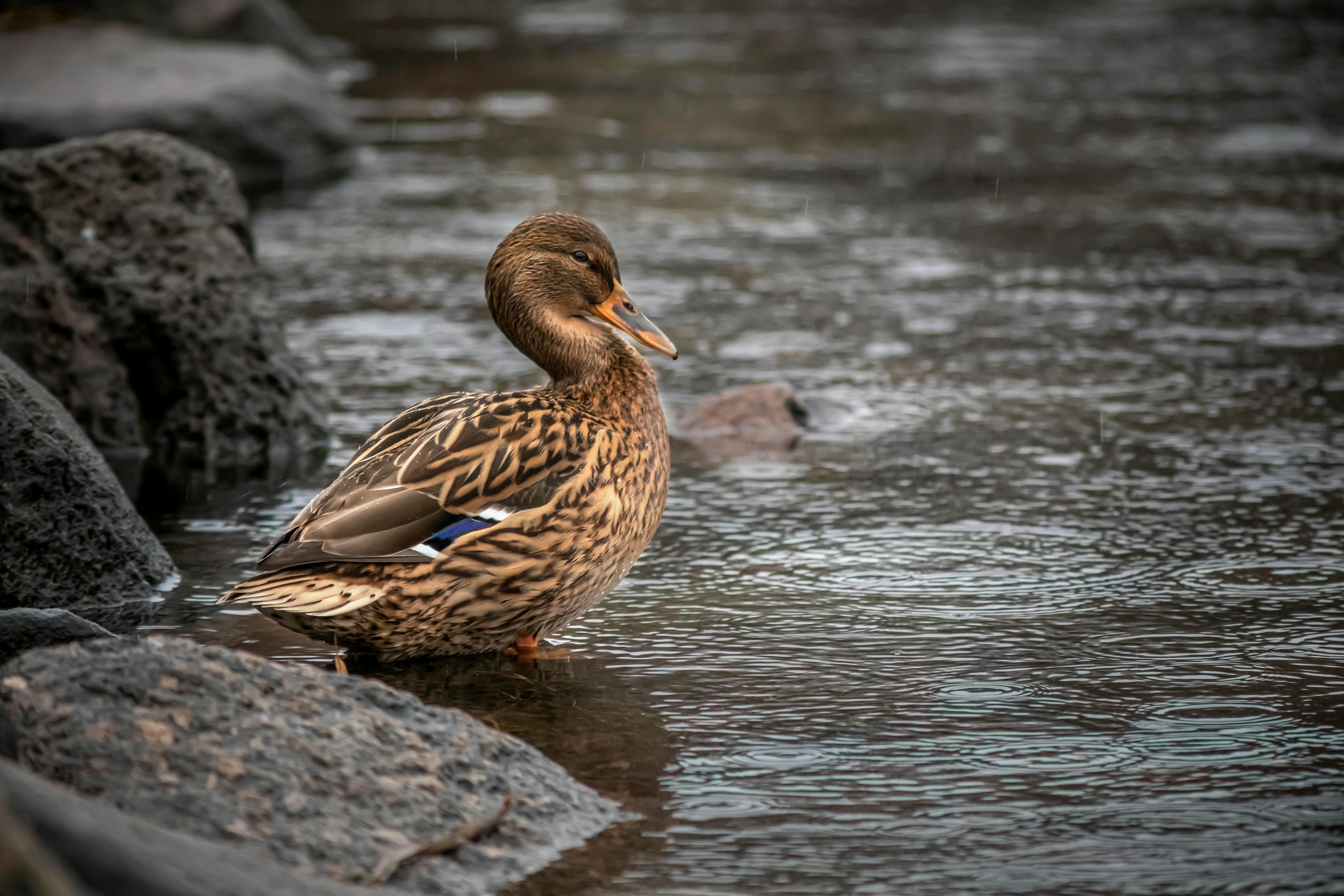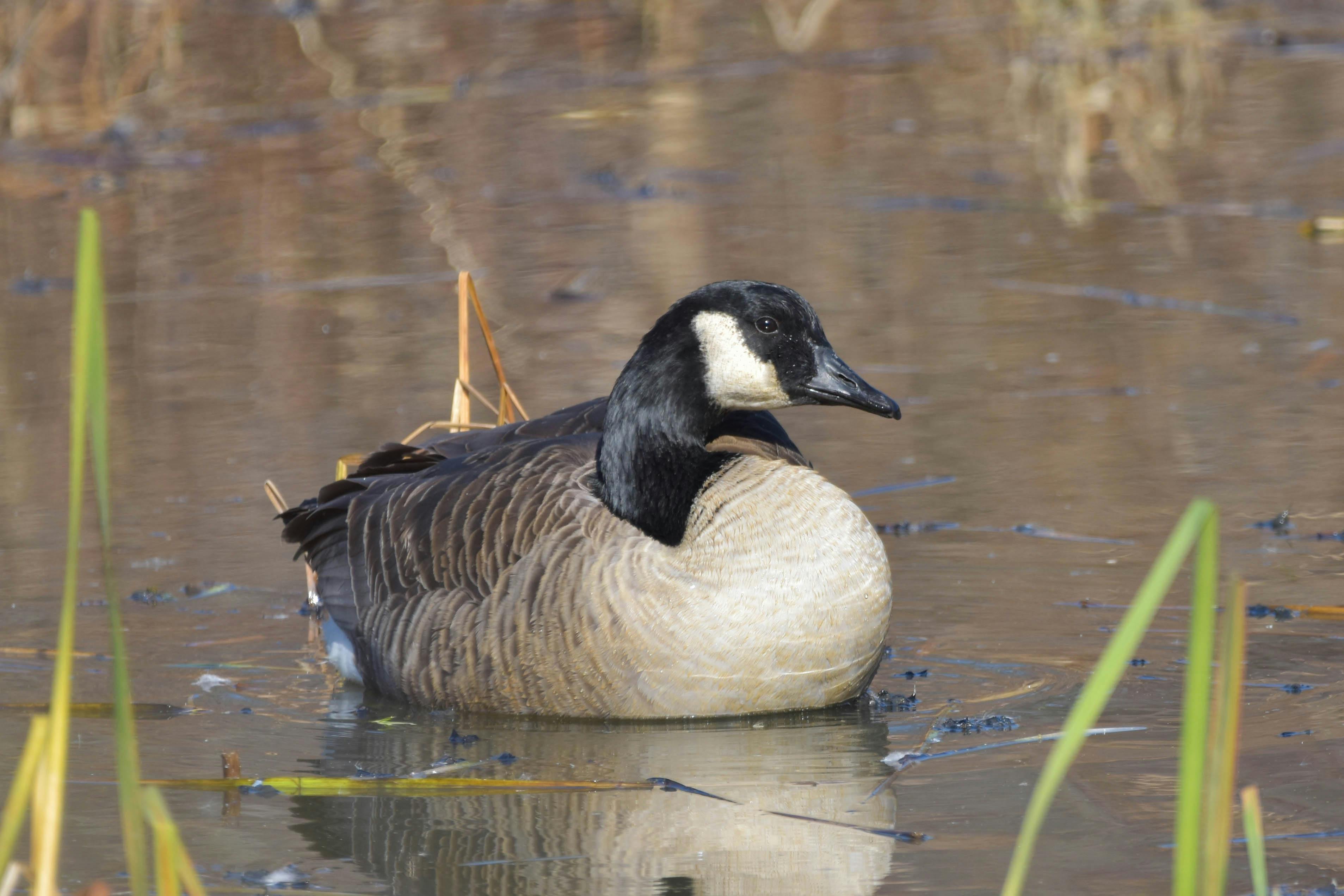Anseriformes
Waterfowl constitute a group of birds with a wide range of sizes, colors, and behaviors.
- Size: Members of this group range from small to large species such as swans that can reach up to 1.5 meters.
- Color: Their plumage varies from soft whites and grays to deep shades of blue, black, and brown, with some species displaying striking colors.
- Behavior: Waterfowl are known for their ability to live either solitary lives or in small groups. They are particularly famous for their capacity to remain still for extended periods, waiting for the right moment to strike their prey.
- Voice: Despite their usual silence, waterfowl produce strong and rough sounds that can be heard from afar.
Habitat and Distribution
Waterfowl are found in wetlands such as lakes, rivers, and coastal areas worldwide, avoiding only the coldest regions. Some species are migratory, moving between breeding and wintering grounds.
Diet
Their diet primarily consists of fish, amphibians, crustaceans, and insects. Their long, slender bills help them successfully hunt in aquatic environments, using sudden attacks to catch their prey.
Reproduction
Waterfowl nest in trees, bushes, or reeds near water, constructing their nests mostly from branches and plant materials. They typically lay 3-5 eggs, which hatch after an incubation period of approximately 20-30 days. Both parents participate in incubation and care for the hatchlings until they are ready to fly and feed independently.
Ecological Importance
Waterfowl are vital components of ecosystems, maintaining the balance of aquatic populations and serving as indicators of wetland health. Their presence is essential for monitoring and conserving the environmental status of these areas.


